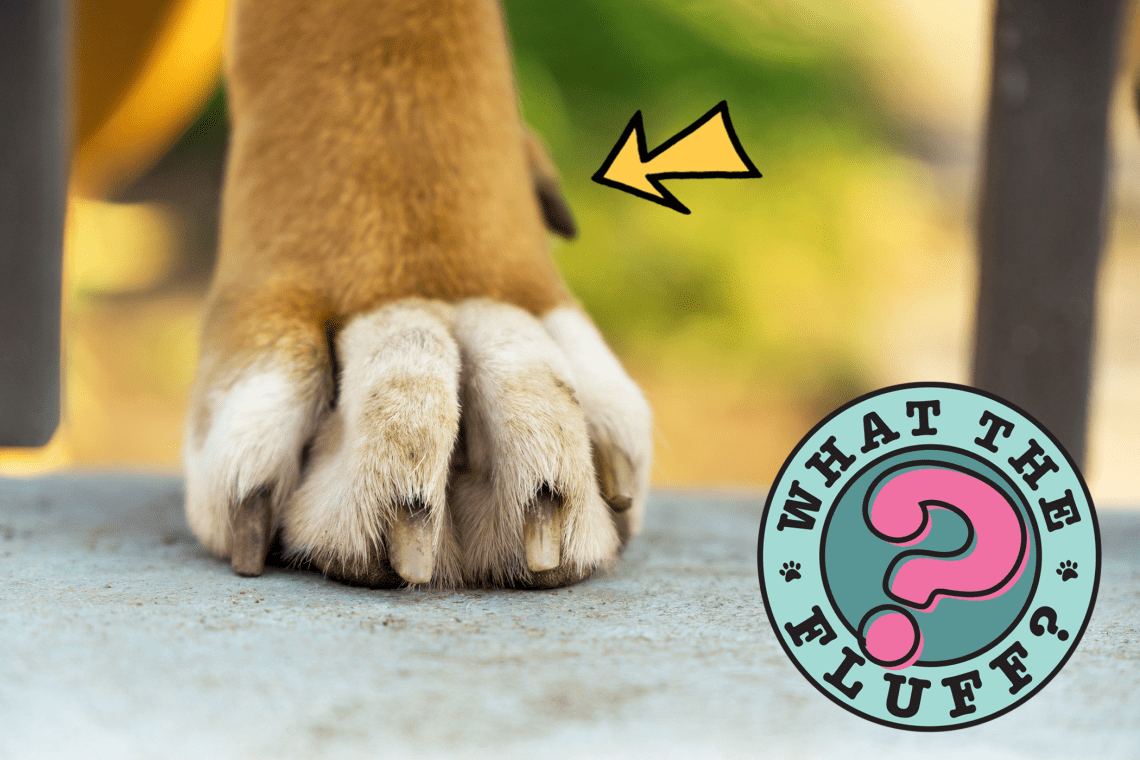
Dewclaws in dogs: what is it?
Have you ever noticed that extra thumb-like claw on the side of your dog’s paw? It’s called the vestigial, or dewclaw, finger, and it’s a holdover from your pet’s evolutionary past.
Why do dogs need vestigial fingers?

Psychology Today author Dr. Stanley Koren traces the history of the vestigial toe of dogs back 40 million years to “a tree-climbing, cat-like animal known as the miacis, which was a distant ancestor of the modern dog.”
“Obviously if you’re a tree climber, having five toes would be an advantage. Nevertheless, the miacis eventually became a terrestrial species, the cynodicts. From that moment on, subsequent generations of animals that would become our dogs began to adapt to the role of social hunters,” writes Dr. Coren.
This means that the extra claw is not a big deal for modern puppies. Despite this, in most dog breeds they are still present on the front paws. Some breeds, such as Pyrenean Mountain Dogs and Briards, have rudimentary toes on their hind feet or are doubled—this is called polydactyly.
Although vestigial fingers are considered of little use, they are certainly not completely unnecessary. Dogs can use them for grabbing. More often than not, you can see your puppy squeezing a bone with his “thumb”. According to the American Kennel Club (AKC), the dog breed that uses its “thumbs” is the Norwegian Lundehund, which uses them to climb mountains.
Debate around vestigial fingers
The AKC, however, notes that this appendage is “essentially an extra foot” and “virtually functionally useless” for most dogs.
For this reason, and because some dogs tend to cling to or rip them out—which can cause a dog severe pain and risk of infection—the AKC calls the removal of vestigial toes one of the “safe and standard animal husbandry practices designed for protecting the safety and welfare of dogs.”
The AKC calls for the removal of these appendages shortly after birth. In fact, many dog breeders perform such an operation on dogs in the first days of their lives. This means that if your dog does not have vestigial toes, they may have been removed before he was yours.
But other organizations firmly believe that removing the vestigial toes does little and causes the animal severe pain. Because of this, some organizations, such as the British Kennel Club in the UK, put forward restrictions on the removal of vestigial fingers.
“Apart from the risk of a vestigial finger catching on anything, there is no reason to remove them,” says Albuquerque Vetco. “It can also be a painful procedure for your dog.”
Veterinarians at a New Mexico clinic recommend that owners trim the appendage’s claw short to prevent it from snagging or tearing. Whatever you decide to do with a dog’s vestigial toe, you should trim all of its nails. Unlike their ancestors or counterparts in the wild, canine claws are not such a great evolutionary requirement, as they do not need them to hunt prey. After all, your cute puppy would rather have you feed him a hearty meal than hunt for it on his own.
The controversy doesn’t die down, but your dog certainly doesn’t know that. All she cares about (whether she has an extra claw or not) is that you, no doubt, love her.





